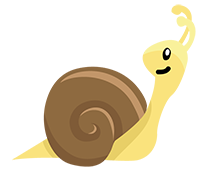Anger Management: Coaching Children in Self Control
About the Author - Karen Stephens is director of Illinois State University Child Care Centre and instructor in child development for the ISU Family and Consumer Sciences Department.
To varying degrees, all children experience angry emotions in childhood. Anger is a basic human response with a variety of root causes, from frustration to confusion to fear of abandonment.
As an example, experiencing anger during bickering, provides children with opportunities to learn positive ways of maintaining self-control. With practice, they can learn to respectfully express anger when stressed. When well-learned, anger management skills help children succeed in all arenas of life, from home to work.
With each developmental stage, children gradually expand their capacity to maintain self-control. Below are key strategies for coaching children on competent anger management:
- Empathise with your child’s point of view. Try to determine what has led to your child’s anger. This will help you assist your child in choosing ways to express angry emotions.
- Help children identify their emotions. They must also, (and this is the hardest part) learn to control how they express and act on those emotions. It is critical that children realise they can choose how to behave when angry.
- Help children learn to “interpret” others’ emotions. Gently remind them that everyone has feelings and rights. Being sensitive to others’ emotions and taking into account their differing perspectives is very hard for young children, it is a high-level thinking skill. So be patient, it is an emerging skill that takes time to develop.
- Model a rich “feelings” vocabulary. From infancy, begin putting words to emotions. Pair words with facial expressions, it helps children learn that everyone has unique feelings. “Your squirming tells me it’s frustrating having your nappy changed. Hold on, I’m almost done.”
“Help children recognise and monitor their unique “warning signs” for anger-overload.”
- Encourage toddlers to empathise by “translating” others’ body language and angry feelings: “That boy is mad, he’s crying because someone grabbed his toy from him. He wants it back.”
- With pre-schoolers, gradually introduce new words to “name” feelings associated with anger, such as: frightened, anxious, mad, scared, angry, worried, nervous, afraid, frustrated, confused, ignored, embarrassed, or mad.
- Set the standard and enforce limits. As children grow, share your beliefs and goals for family life, affirm everyone’s right to be safe, emotionally and physically. As soon as children reach the early toddler stage (18 months), set ground rules for how anger may be expressed. Identify which behaviours are acceptable and which are not. “It’s not acceptable to throw toys. Tell me what’s wrong instead.”
- Be a good example. Tell children they can feel any way they wish, but they must control how they act on their feelings.
- Illustrate the behaviour you expect. If you don’t want kids yelling, name-calling, or belittling others, change your own ways first.
- Encourage language usage rather than physical aggression. Ask children to tell you what they want or need. Remind children to use language, rather than grunts, shoves, or hits. “I know it is hard to wait. Tell me you want more peas. Banging your spoon doesn’t make me want to help you.”
- Encourage children to manage stress. Help children recognise and monitor their unique “warning signs” for anger over load. They may become red in the face, grit teeth, tense shoulders, or feel short of breath. When that happens, prompt your child to notice the physical sensations as reminders to calm down. Then suggest ways to regain calm and composure. For instance, share tips such as slow rhythmic breathing, listening to music, or playing a physical game.
“Help children recognise and monitor their unique “warning signs” for anger-overload.”
- Help children express angry feelings constructively. Be on hand to help children “interpret” emotions. “You seem really angry, it is frustrating when someone gets a toy you wanted first. Crying didn’t help, is there another toy you can play with while you wait for that one?”
- Show children how to address problems without aggression. Focus on behaviour, not name calling and on what can be achieved, rather than blaming or shaming. Family educators encourage parents to recommend “I feel” statements to help children express anger accurately and constructively. For instance, if your child gets into a fight over a toy, coach anger management and problem solving by saying: “Tell your sister you’re frustrated when she grabs your book. Tell her you are afraid she might tear it.”
- Offer choices to toddlers. Because they are just learning about emotions and language, toddlers need more help sorting out angry feelings. They can even distract themselves with their own tantrums. Interpret first. “Screaming isn’t helping, here are two things you can do.” When given a clear choice, toddlers are better able to calm down, focus, and follow through.
- Take a stand against physical aggression and name-calling. “I won’t let you hurt your brother, I would never let him hit you, either. Think of another way to let him know what you’re feeling.”
- Offer specific feedback and encouragement. Comment on your child’s respectful expression of anger whenever possible, such as “I heard you and Andy arguing over the wagon. That was a good idea to reassure him you would give it to him next rather than just yelling.” Or “I heard you telling Trisha you were angry she knocked down your block building, that was good self-control.”
Teaching children how to safely express emotions requires patience, stamina, and quick thinking. But once children master self-control over anger, they are more likely to create a future that is safer and more respectful for everyone.




